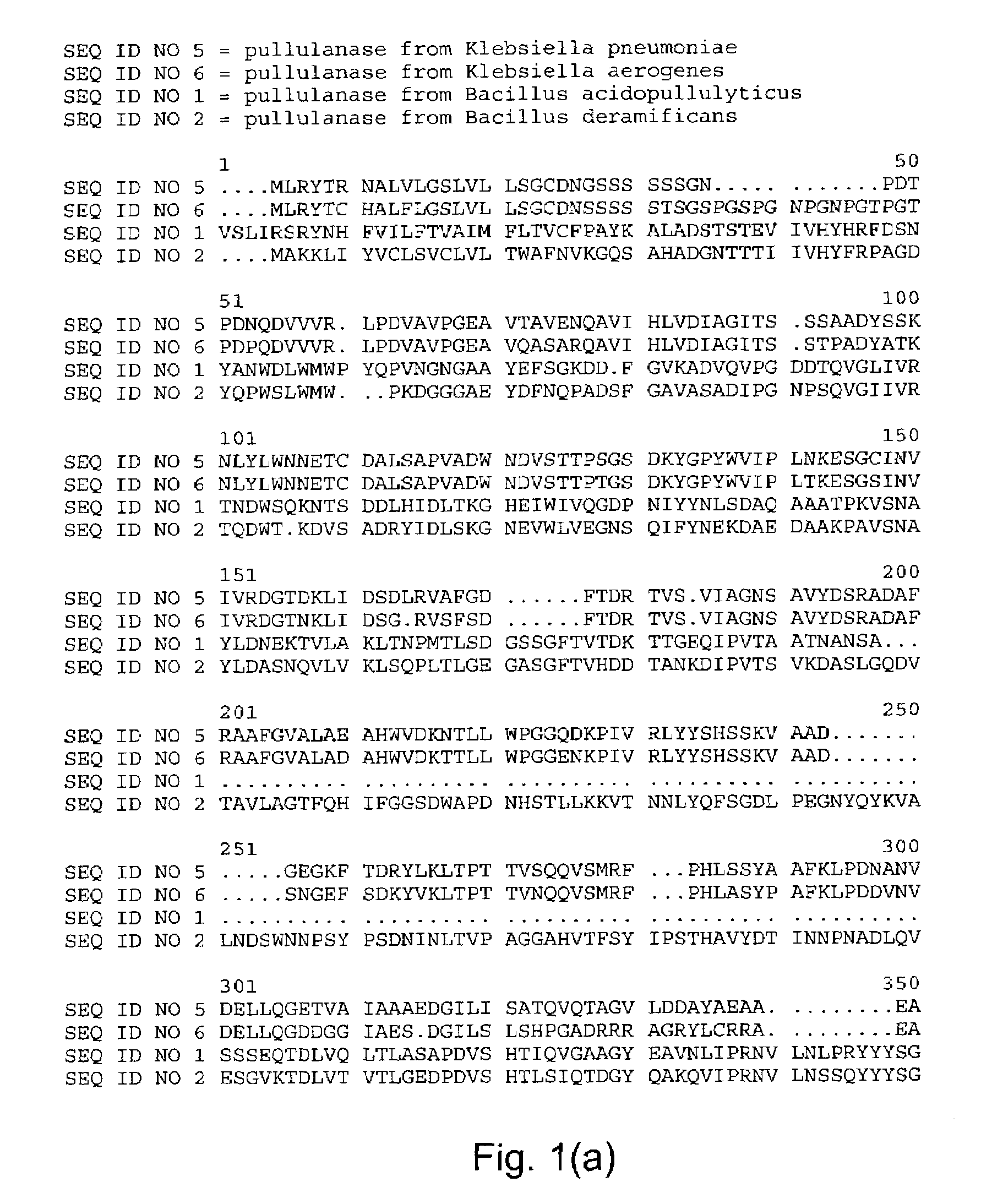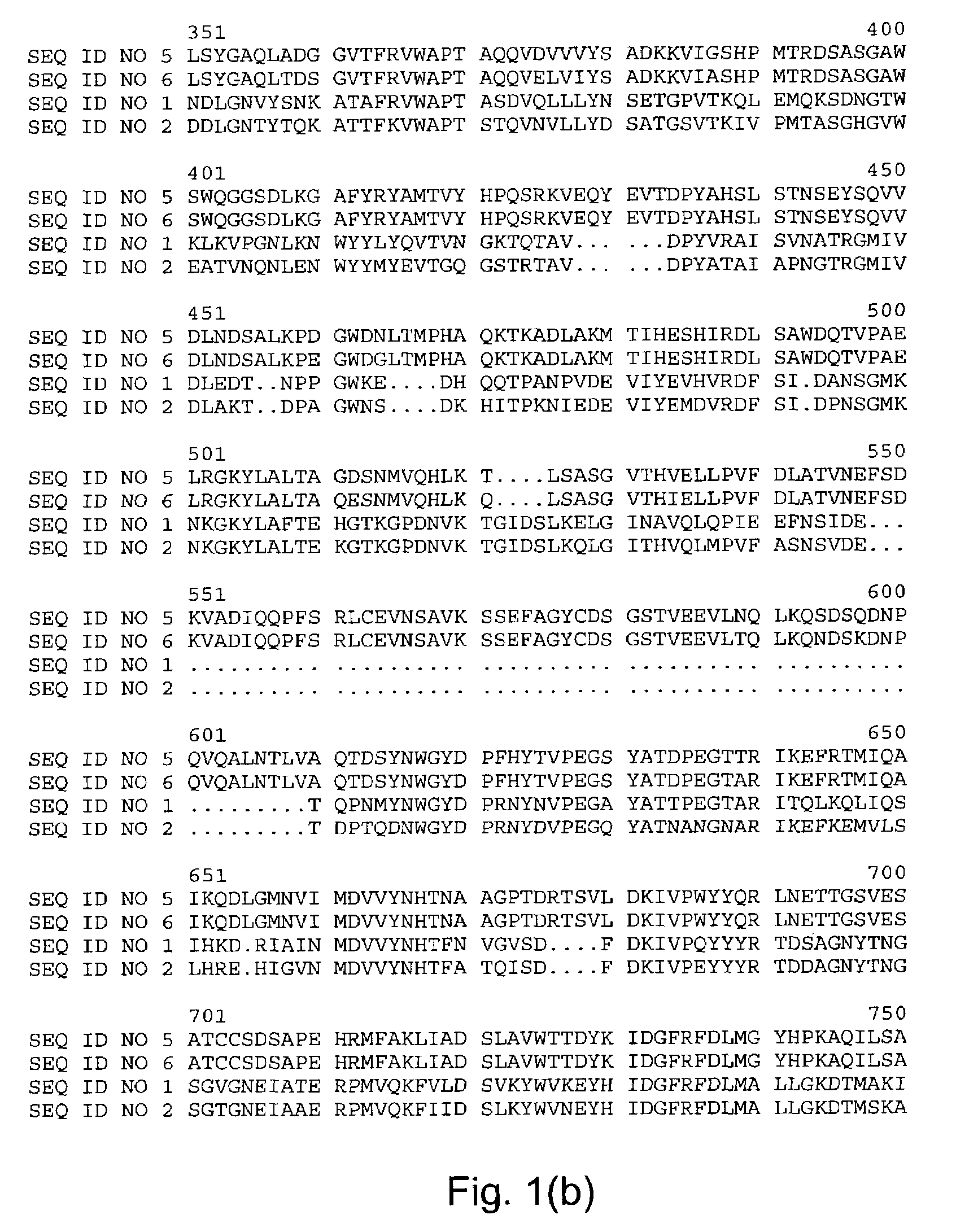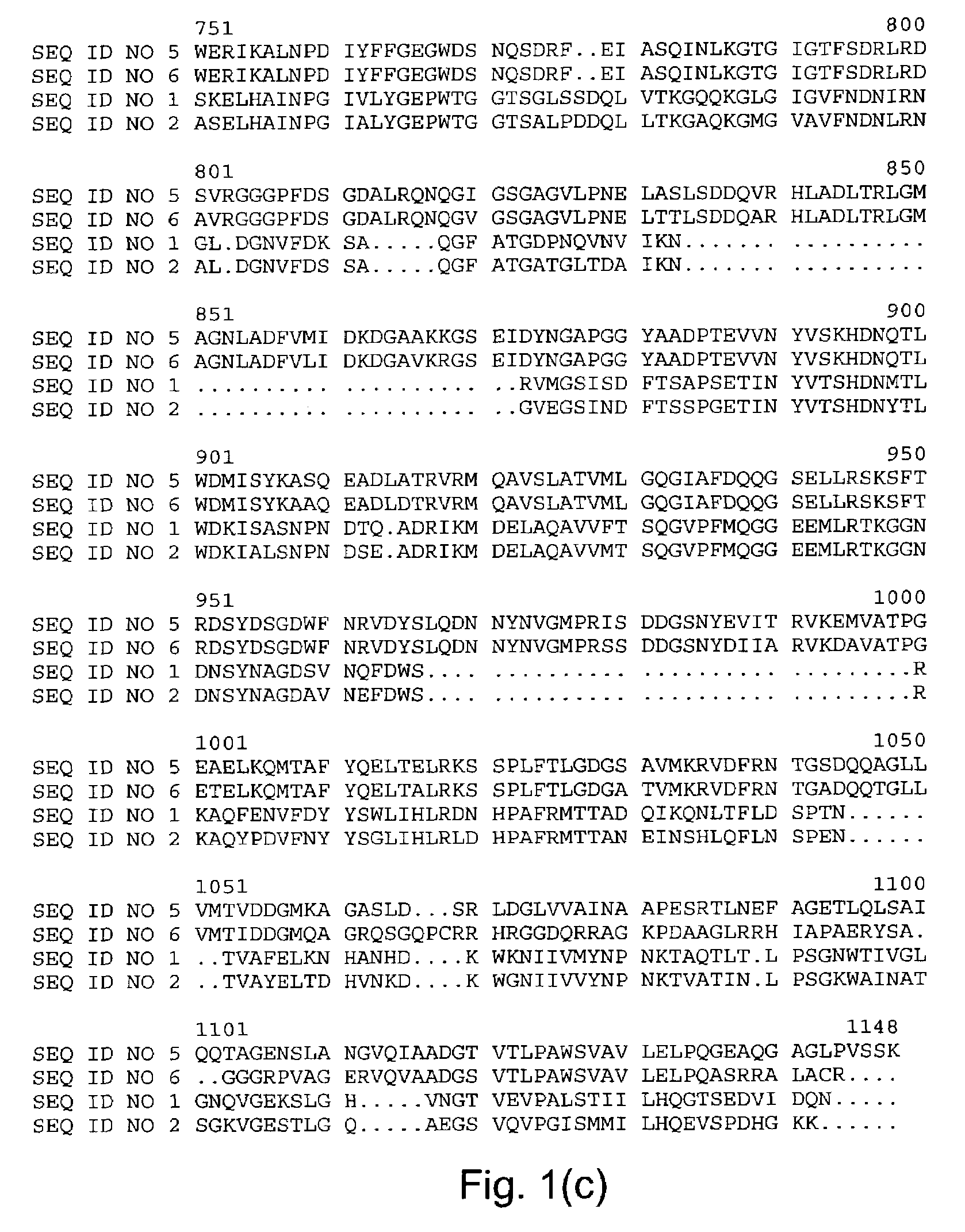Starch debranching enzymes
a starch debranching and enzyme technology, applied in the field of starch debranching enzymes, can solve the problems of significantly reducing the saccharification yield and being highly undesirable, and achieve the effect of increasing the thermostability
- Summary
- Abstract
- Description
- Claims
- Application Information
AI Technical Summary
Benefits of technology
Problems solved by technology
Method used
Image
Examples
example 1
Donor Organisms:
[0199]Bacillus acidopullulyticus comprises the pullulanase enzyme encoding DNA sequence of the pulB gene (SEQ ID NO: 13) (Kelly, A. P., Diderichsen, B., Jorgensen, S. And McConnett, D. J.(1994) Molecular genetic analysis of the pullulanase B gene of Bacillus acidopullulyticus. FEMS Microbiology letters 115, 97-106).
Other Strains:
[0200]E. coli strain: Cells of E. coli SJ2 (Diderichsen, B., Wedsted, U., Hedegaard, L., Jensen, B. R., Sjøholm, C. (1990) Cloning of aldB, which encodes alpha-acetolactate decarboxylase, an exoenzyme from Bacillus brevis. J. Bacteriol., 172, 4315-4321), were prepared for and transformed by electroporation using a Gene PulserTM electroporator from BIO-RAD as described by the supplier.
[0201]B. subtilis PL1801. This strain is the B. subtilis DN1885 with disrupted apr and npr genes (Diderichsen, B., Wedsted, U., Hedegaard, L., Jensen, B. R., Sjøholm, C. (1990) Cloning of aldB, which encodes alpha-acetolactate decarboxylase, an exoenzyme from Bac...
example 2
Purification of Bacillus acidopullulyticus Pullulanase (Promozyme™)
[0224]Bacillus acidopullulyticus pullulanase was purified from a fermentation of B. acidopullulyticus (described in EP 63,909), the pullulanase being secreted to the medium.
[0225]A filter aid was added to the culture broth, which was filtered through a filtration cloth. This solution was further filtered through a Seitz depth filter plate, resulting in a clear solution. The filtrate was concentrated by ultrafiltration on 10 kDa cut-off polyethersulfone membranes followed by dialfiltration with distilled water to reduce the conductivity. The pH of the concentrated enzyme was adjusted to pH 4.5. The conductivity of the concentrated enzyme was 0.7 mS / cm.
[0226]The concentrated pullulanase was applied to an S-Sepharose FF column equilibrated in 20 mM CH3COOH / NaOH, pH 4.5, and the enzyme was eluted with a linear NaCl gradient (0→0.5M). The pullulanase activity eluted as a single peak. The pooled fractions with pullulanase ...
example 3
Thermostability of Pullulanases and Isoamylases
[0230]The thermostability of pullulanases and isoamylses may be tested by means of DSC (Differential Scanning Calorimetry). The thermal denaturation temperature, Td, is taken as the top of the denaturation peak in thermograms (Cp vs. T) obtained after heating enzyme solutions at a constant, programmed heating rate.
Experimental:
[0231]A suitable DSC apparatus, e.g. a DSC II apparatus from Hart Scientific (Utah, USA) may used for the experiments. 50 mM buffered solutions are used as solvent for the enzyme (approx. 2 mg / ml) at either pH 10 (50 mM glycine buffer), pH 7 (50 mM HEPES buffer+10 mM EDTA) or pH 4 (50 mM citrate buffer). The enzyme may be purified as described above. 750 μl enzyme solution is transferred into standard 1 ml sealable hastelloy ampoules (Hart Scientific). Ampoules are loaded into the calorimeter and cooled to 5° C. for 15 min. Thermal equilibration is carried out prior to the DSC scan. The DSC scan is performed at fr...
PUM
| Property | Measurement | Unit |
|---|---|---|
| temperature | aaaaa | aaaaa |
| temperature | aaaaa | aaaaa |
| pH | aaaaa | aaaaa |
Abstract
Description
Claims
Application Information
 Login to View More
Login to View More - R&D
- Intellectual Property
- Life Sciences
- Materials
- Tech Scout
- Unparalleled Data Quality
- Higher Quality Content
- 60% Fewer Hallucinations
Browse by: Latest US Patents, China's latest patents, Technical Efficacy Thesaurus, Application Domain, Technology Topic, Popular Technical Reports.
© 2025 PatSnap. All rights reserved.Legal|Privacy policy|Modern Slavery Act Transparency Statement|Sitemap|About US| Contact US: help@patsnap.com



